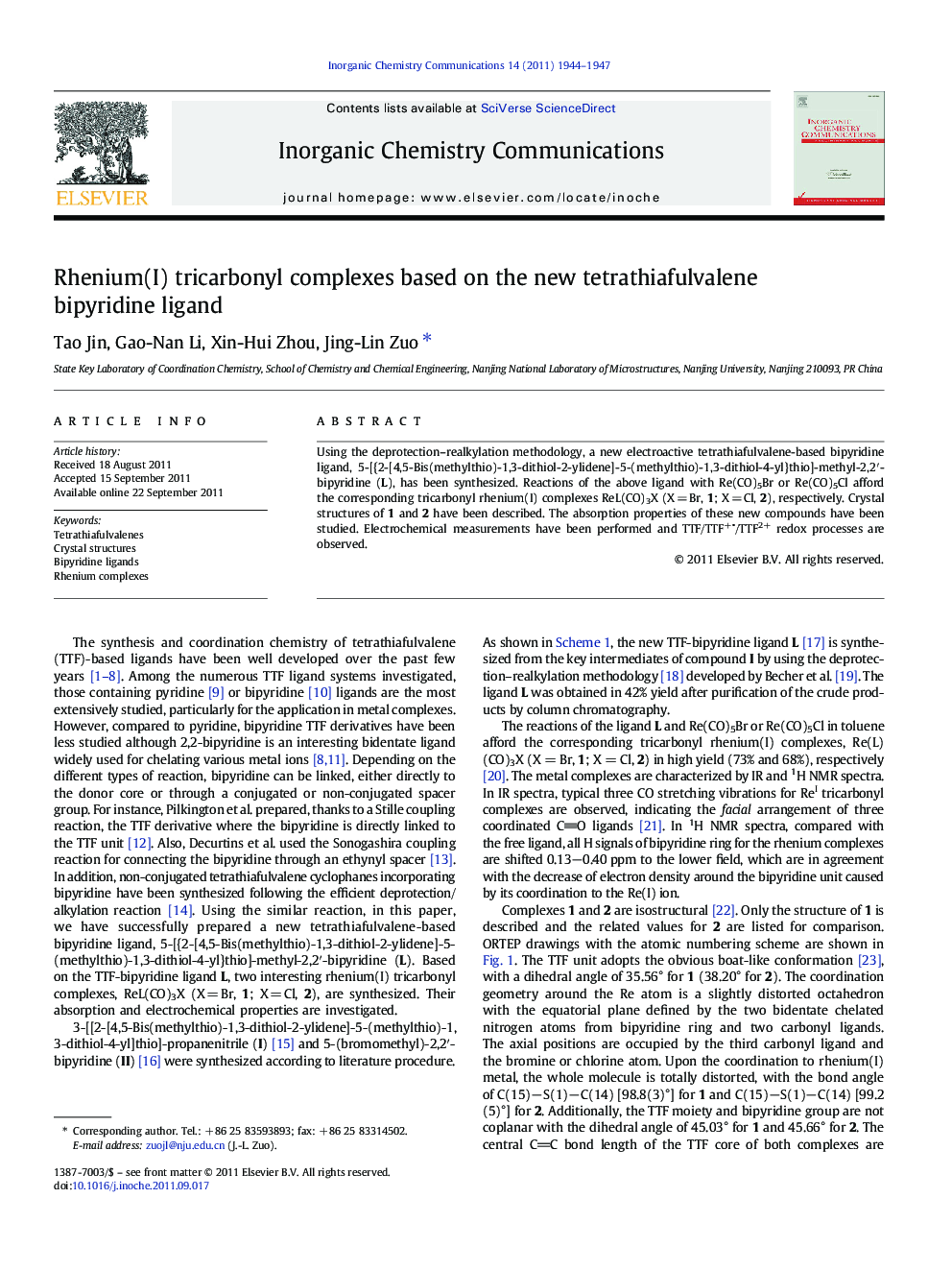| Article ID | Journal | Published Year | Pages | File Type |
|---|---|---|---|---|
| 1302472 | Inorganic Chemistry Communications | 2011 | 4 Pages |
Using the deprotection–realkylation methodology, a new electroactive tetrathiafulvalene-based bipyridine ligand, 5-[{2-[4,5-Bis(methylthio)-1,3-dithiol-2-ylidene]-5-(methylthio)-1,3-dithiol-4-yl}thio]-methyl-2,2′-bipyridine (L), has been synthesized. Reactions of the above ligand with Re(CO)5Br or Re(CO)5Cl afford the corresponding tricarbonyl rhenium(I) complexes ReL(CO)3X (X = Br, 1; X = Cl, 2), respectively. Crystal structures of 1 and 2 have been described. The absorption properties of these new compounds have been studied. Electrochemical measurements have been performed and TTF/TTF+•/TTF2+ redox processes are observed.
Graphic abstractTwo rhenium(I) tricarbonyl complexes with the new electroactive tetrathiafulvalene-based bipyridine ligand, 5-[{2-[4,5-Bis(methylthio)-1,3-dithiol-2-ylidene]-5-(methylthio)-1,3-dithiol-4-yl}thio]-methyl-2,2′-bipyridine (L), have been prepared and structurally characterized. The absorption and electrochemical properties of these new compounds have been studied.Figure optionsDownload full-size imageDownload as PowerPoint slideHighlights► A new electroactive tetrathiafulvalene-based bipyridine ligand is synthesized. ► Two rhenium(I) tricarbonyl complexes based on the ligand are structurally characterized. ► The TTF/TTF+•/TTF2+ redox processes are observed for the ligand and the related metal complexes.
